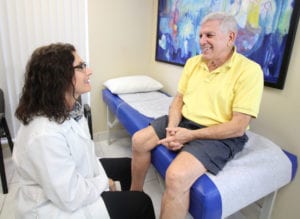
Chronic obstructive pulmonary disease (COPD) is the fourth leading cause of death in the United States, and is projected to be the third by 2020. COPD is associated with an exaggerated chronic inflammatory response causing airway abnormalities. Patients typically undergo a progression of declining lung function, characterized by an increase of cough, shortness of breath, and mucus production. Extra-pulmonary manifestations of COPD include osteoporosis, cardiovascular disease, skeletal muscle abnormalities, and depression. There is currently no cure and the manifestations can only be treated symptomatically. It afflicts more than 5% of the population in many countries and accounts for more than 600 billion in health care costs, morbidity, and mortality.
Adult stem cells are found in every part of the body and their primary role is to heal and maintain the tissue in which they reside. Stem cells are unspecialized cells capable of renewing themselves by cell division. In addition, they have the ability to differentiate into specialized cell types. Adult stem cells can be harvested from a patient’s own tissue, such as adipose (fat) tissue, muscle, teeth, skin or bone marrow. One of the most plentiful sources of stem cells in the body is the fat tissue. In fact, approximately 500 times more stem cells can be obtained from fat than bone marrow. Stem cells derived from a patient’s own fat are referred to as adipose-derived stem cells (ADSCs). Adipose derived stem cells have been explored with respect to their activity in diseases involving significant inflammatory or degenerative components. More recently, adult stem cells have been identified as having the potential to reverse the effects of diseases like COPD.
 The mixed population of cells that can be obtained from fat is called a stromal vascular fraction (SVF). The SVF can easily be isolated from fat tissue in approximately 30-90 minutes in a clinic setting (under local anesthesia) using a mini-lipoaspirate technique. The SVF contains all cellular elements of fat, excluding adipocytes. Tens to hundreds of millions of ADSCs can be obtained in the context of the SVF acquired from 20-200 ml of adipose tissue during this out-patient procedure. This sets the stage for their practical use at the point-of-care, in which a preparation of ASC can be provided for infusion or injection after the mini-liposuction. COPD patients who have undergone stem cell therapies often express the willingness to receive additional cell infusions if possible, due to a feeling of well-being associated with the injection. There is early evidence of feasibility and safety of infusions into the patients with COPD. In relevant studies, intravenous infusion of cultured adipose stem cells has been demonstrated to remarkably improve the onset and progression of smoke exposure-induced emphysema in rodents.
The mixed population of cells that can be obtained from fat is called a stromal vascular fraction (SVF). The SVF can easily be isolated from fat tissue in approximately 30-90 minutes in a clinic setting (under local anesthesia) using a mini-lipoaspirate technique. The SVF contains all cellular elements of fat, excluding adipocytes. Tens to hundreds of millions of ADSCs can be obtained in the context of the SVF acquired from 20-200 ml of adipose tissue during this out-patient procedure. This sets the stage for their practical use at the point-of-care, in which a preparation of ASC can be provided for infusion or injection after the mini-liposuction. COPD patients who have undergone stem cell therapies often express the willingness to receive additional cell infusions if possible, due to a feeling of well-being associated with the injection. There is early evidence of feasibility and safety of infusions into the patients with COPD. In relevant studies, intravenous infusion of cultured adipose stem cells has been demonstrated to remarkably improve the onset and progression of smoke exposure-induced emphysema in rodents.
Stem cells possess enormous regenerative potential. The potential applications are virtually limitless. Patients can receive cutting edge treatments that are safe, compliant, and effective. Our team has successfully treated over 7000 patients with very few safety concerns reported. One day, stem cell treatments will be the gold standard of care for the treatment of most degenerative diseases. We are extremely encouraged by the positive patient results we are seeing from our physician-based treatments. Our hope is that stem cell therapy will provide relief and an improved quality of life for many patients. The future of medicine is here!
For additional information on Stem Cell Centers of Excellence’s South Miami clinic, visit www.stemcellcoe.com.






